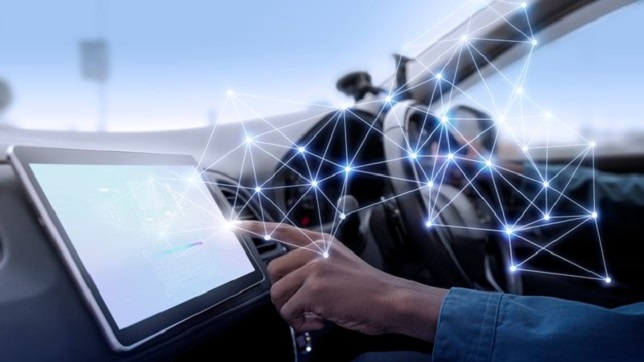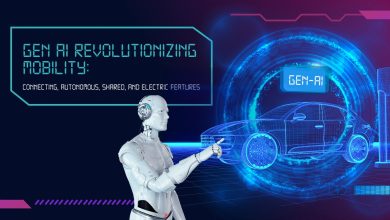Autonomous Underwater Vehicle (AUV) Market Report

The automotive industry is on the verge of a technological revolution and has come a long way since Henry Ford’s assembly line debuted. Given the tremendous pace of technological innovation, the possibilities for the future are only limited by our imagination. Among these innovations is the autonomous vehicle, or driveler automobile. Such a technological discovery has the potential to be both disruptive and revolutionary in its impact on human autonomy and on the forming of future societies. The autonomous vehicle will certainly join unmanned drones and digital monitoring as one of the most remarkable technological advancements of our era. While some countries have already begun to implement required legislative changes in preparation of the autonomous vehicle being a viable method of transportation, only time will tell how others will prepare in terms of insurance, liability, cyber security, safety, ethics, and performance standards.
Investment in Autonomous Vehicles
Self-driving cars are expected to account for 25% of all vehicles on the road by 2030, according to estimates. Advanced technology and sensors are used by self-driving automobiles to assist them negotiate the road safely. These automobiles can read road signs and recognise the margins of the road, traffic signals, and the presence of other vehicles thanks to their multiple video cameras and sensors. All of this information is analysed by a central control system, which then directs the vehicle’s steering and movement to keep it safe from other vehicles.
There is a lot of R&D work going on right now all across the world. Google, Tesla, Mercedes, Ford, Nissan, Volkswagen, Hyundai, and others are leading the charge by utilising cutting-edge technology like artificial intelligence, machine learning, and robotics engineering.
Read more: https://www.reportsanddata.com/report-detail/autonomous-underwater-vehicle-(auv)-market
Elon Musk, the founder of Tesla, estimated in 2016 that true autonomous driving would be possible in the next 5 to 6 years, at which point individuals would be able to get into their car, sleep, and wake up at their respective locations. Google’s Sergey Brin stated unequivocally that he expects to get his driverless cars on the road by 2018. Audi demonstrated its A8 limos with self-driving capabilities at a 2017 auto exhibition in Barcelona.
Uber has already improved its market position, with former CEO Travis Kalanick predicting that the whole Uber fleet would be driverless by 2030. Pilot programs for autonomous Uber cabs have already begun in Pittsburgh, Singapore, and San Francisco, but they face significant regulatory challenges. Apple has made a USD 1 billion investment in Didi Chuxing Technology Co. to aid in the advancement of its self-driving technology. Its goal is to develop an autonomous driving system that will enable it to cooperate with existing automakers or launch its own automobile development project in the future, producing goods that are intimately integrated with its iOS devices. To capitalise on the developing software market for autonomous cars, Blackberry announced intentions to invest approximately USD 76 million and construct a development centre in Ottawa, Canada under its QNX platform to develop software that might complement the driverless vehicle’s functionality. Even large corporations including as Intel, Microsoft, Nvidia, and Baidu have invested significantly in the development of autonomous vehicle transportation systems.
Honda Motor Co. has been in discussions with Waymo, Google’s autonomous driving business, since December 2016 about integrating Waymo’s self-driving technologies into some of its vehicles. Waymo has announced that it will convert an existing factory in the Detroit, Michigan area into a level four autonomous car retrofit facility, utilising underused factory space in the Midwest United States. Volkswagen’s recent establishment of MOIA, a stand-alone company within the Volkswagen group, to provide electric powered shuttles in cities follows a recent trend among prominent manufacturers to combine two of the most significant trends in mobility: app-based ride hailing and electric vehicles.
The case for autonomous vehicles : social and environmental
Autonomous vehicle technology aspires to usher in a new era of transportation. It will significantly reduce accidents, improve mobility and safety, create a healthier atmosphere, alleviate congestion, and boost productivity.
The underlying reason why all major industry participants support autonomous vehicles is that autonomous vehicles hold the key to a better and cleaner transportation ecology and a better human experience. Autonomous vehicles are intended to alleviate road congestion, enhance road design by allowing for the addition of additional cars in seamless coordination with one another on the same amount of road space, provide safer transportation, and promote mobility. Additionally, it will result in a hassle-free travel experience for bikes, pedestrians, and motorists. It also has the potential to cause a significant societal shift, to the point where the concept of someone driving themselves will cease to be the norm. Additionally, it is thought that driverless vehicles will significantly increase road safety. According to analysis, self-driving cars will reduce road accidents by up to 90%. Automation will result in safer driving, resulting in annual savings of up to USD 190 billion, the majority of which will come from lower health care expenditures.
Human mistake has been a major factor in road accidents; drivers distracted by their phones, drunk driving, lack of ability, and road rage are just a few examples of common accident-inducing faults. Driverless cars would obliterate the possibility of human error on the road.
Automobile manufacturers are already exploring new business models such as automobile sharing, rental, or taxi services in lieu of car ownership or retail. If cars can be summoned anytime they are required, car ownership may become an outmoded concept. This would also ensure that everyone had an equal opportunity to use the system, and people would no longer be reliant on drivers for their journey. Even the crippled and old would have equal access and mobility, enabling them to become self-sufficient. Human productivity is certain to grow significantly as people may redirect their time spent driving to more productive tasks. A driverless future will result in individuals having an additional minute per day for work or recreation, as well as billions of additional square feet of parking space, owing in part to the better parking abilities of autonomous vehicles.
The introduction of autonomous vehicles and the resulting availability of a portfolio of transportation options promises to improve safety and convenience by determining the shortest routes, minimising time spent driving in search of parking, and eliminating pointless acceleration and honking. By minimising needless driving, we can achieve up to a 50% increase in fuel economy and a 90% reduction in associated carbon emissions. Due to decreased road congestion, no more roads are required, which would assist in maintaining and freeing up green space. At the moment, roadways and accompanying infrastructure are designed with the human need for visual input in mind. As car ownership declines, one may envision cities being completely redesigned around people’s interests and comforts, as they should be, rather than around cars, as they currently are.
Uber has already begun considering the possibility of flying cars in addition to driverless cars. Whether people are transported in flying vehicles or driverless cars, one immediate effect will be a reduction in the requirement for parking, providing communities with a public space dividend by freeing up space for parks, bicycling paths, and other environmentally friendly public facilities. While the benefits of a driverless future on the environment and the cities of the future are obvious, certain circumstances may negate some of the benefits. As autonomous cars make commuting more affordable and comfortable, allowing passengers to work, sleep, and occupy themselves on the way to work, they will make it simpler for people to live in remote suburbs, resulting in an extension of urban sprawl. This would result in an increase in the average distance travelled by automobiles. Public transportation may be jeopardised when low-cost autonomous alternatives entice passengers away from public transportation. If people abandon large vehicle transit such as buses in favour of driverless ride hailing systems, congestion in crowded cities may worsen.
Countries all over the world planning a driverless future
Nations with industries on the cutting edge of such technological advancements are seeking to position themselves as early adopters in order to capitalise on this disruptive technological trend that has the potential to reshape human society in the twenty-first century. Numerous countries worldwide have begun taking steps to prepare for the inevitable rule of the driverless vehicle.
The Netherlands came out on top in Autonomous Vehicle Readiness Index 2019 and is deploying platoons of more than 100 self-driving trucks on major highways. China is on track to sell its self-driving cars by 2025. Singapore, Norway, Finland, Germany, Sweden, and the United States have already approved the usage of self-driving cars. Aside from the Netherlands, the United Kingdom, France, and Australia are also working on legislation to boost the use of autonomous vehicles.
In India, the adoption of self-driving automobiles is still a long way off. The following are some of the reasons:
The Indian government has taken a firm stance against the introduction of self-driving cars in the country, citing job loss as the key cause. According to the government, there are 40 lakh drivers in the country, with a shortage of 25 lakh. The government does not want to jeopardise trained driver positions, claiming that the implementation of this technology might jeopardise the jobs of approximately a crore people. Furthermore, the government feels that the infrastructure required for such a technology—complete with well-organized driving conditions—is currently lacking in the country.
When compared to their western equivalents, India’s highways are not suited to self-driving cars. Cities like Delhi and Mumbai have roadways that are constantly congested at all hours of the day. Furthermore, Indian drivers disregard traffic laws. They ignore the signals and drive in the wrong lane. This is a dangerous driving behaviour that a driverless car is not trained to anticipate.
There are concerns about the economic feasibility of deploying self-driving cars in India, as corporations are concerned about high R&D expenditures and market viability.
India must not overlook the advantages
Despite the difficulties, India cannot turn a blind eye to the deployment of driverless vehicles. For starters, they allow users to make better use of their commuting time rather than wasting it on driving. They can help save lives by reducing human errors, which are the leading cause of traffic accidents. Driverless cars are also a great way for those with physical limitations who are unable to drive on their own to go around. While autonomous cars may take longer to get on Indian roads, the first step has been taken in the shape of self-driving tractors and trucks. Escorts, Mahindra & Mahindra, and Flux Auto are among the companies that are planning to launch them soon.
Author:

Paroma Bhattacharya
Content Writer
Reports and Data
Paroma Bhattacharya is a passionate content creator and has been a professional content writer for over half a decade. She is currently working for Reports and Data and possesses extensive knowledge in subjects related to healthcare, technology, banking, and a wide range of other industry verticals. Her articles focus primarily on balancing relevant data with engaging storytelling. She believes in providing objective facts to help people make important business decisions.

